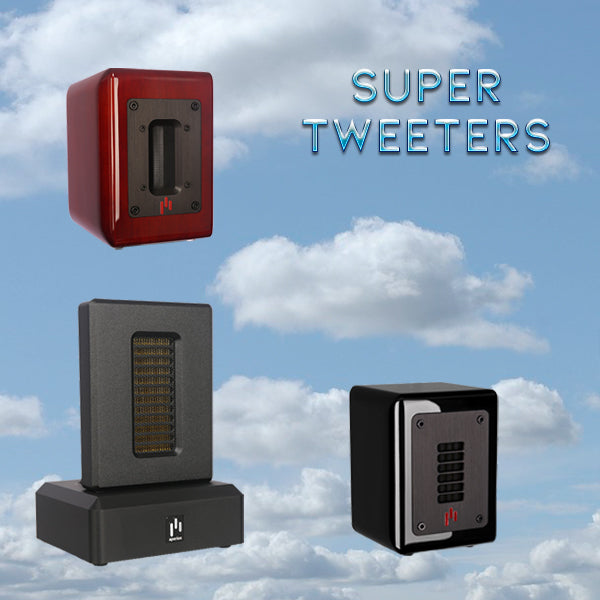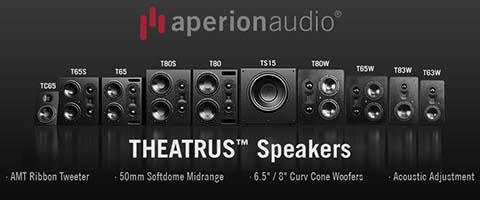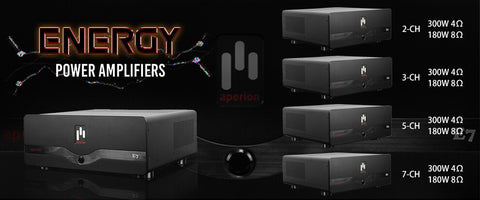What is Dolby Atmos?

If you’ve been to the movies in the last couple of years, you might have heard of Dolby Atmos. If not, don’t fret: This blog will help explain what it is and, most importantly, how to set up your home theater system with Dolby Atmos surround sound.
First introduced in the Disney movie Brave, Dolby Atmos is a surround processing format that treats sounds as objects that exist in a hemispherical acoustic space. With Atmos, sound engineers no longer have to mix individual sounds into one or more speakers in a prescribed 7.1 setup: Up to 128 simultaneous sound objects can be manipulated in various ways and moved about in multidimensional space. Any individual sound can be piped through a total of up to 64 independent speaker outputs.
The process works by tagging each sound object with metadata describing its location within the hemisphere for any given moment. That data is encoded into the movie’s soundtrack and is then decoded in the playback chain, where the movie theater’s surround processor automatically adjusts output levels for the number and position of loudspeakers available.
Thus, Atmos improves upon previous surround formats in two major ways: By adding height information with overhead speakers, for greater auditory immersion; and by enabling greater movement of a much larger number of sounds within the hemispherical space, resulting in a more 3-dimensional experience. The roar of a jet engine, for example, can now zoom up, down, or all around with far better precision and greater realism than possible through 5.1 or 7.1 channels. And even if certain theaters can’t make use of all 64 channels, Atmos’ processing should still result in more realistic sound tracking by processing much more locational information than possible with traditional channel-based surround sound.
For many of us, cramming 128 speakers into a theater room just isn’t realistic, which is why Atmos is scaled down for home environments: It only adds two or four independent channels of overhead speakers to a traditional 5.1 or 7.1 setup. Additional channels are tagged onto the end of existing configuration designations, i.e. 5.1.4 for 5.1 systems plus 4 overhead speakers; or 7.1.2 for 7.1 systems with two overhead speakers.
- - - - - - - - - - - - - - - - - - - - - - - - - - - - - - - - - - - - - - - - - - - - - - - - - - - - - - - - - - - - - - - -
What You’ll Need
Now that you’re familiar with Atmos, here are the four things you’ll need to set it up in your own home theater:
1) An A/V Receiver or Surround Processor Capable of Processing the Atmos Format.
As of this writing, several manufacturers have stated that some existing models can be made compatible with a firmware update; check your receiver manufacturer’s website for further information. Some manufacturers have also debuted new receivers and processors that can decode Atmos, including Marantz, Yamaha, Onkyo, Denon, Pioneer and Integra. If you’re after the full Atmos experience, search out models capable of supporting 11.1 sound channels (7.1 surround + .4 ceiling speakers = 11 active channels plus sub channel = 11.1 receiver). The complete list of gear can be found here.
2) Additional Atmos Effects Speakers.
These can be in the form of in-ceiling or ceiling-mounted speakers and are responsible for the overhead, hemispherical effect. If ceiling speakers aren’t an option, various add-on speaker modules with upward-pointing drivers are available. These are placed on top of your existing front and rear left and right speakers. The modules usually feature sloped baffles that angle the sound towards the center of the ceiling, reflecting sounds downward so your ears perceive them as coming from above. Some manufacturers are also building Atmos-specific drivers right into the tops of their speakers. While speakers positioned at the ceiling should offer more realistic performance, reports from the field suggest that adding the modules also works surprisingly well.
3) A Source Component Capable of Processing the Atmos Signal.
Any existing Blu-ray player, connected via HDMI to your A/V receiver or processor, should work just fine for this.
4) Blu-ray movies encoded with Dolby Atmos surround.
So far, over 200 movies have been mixed with Atmos, including the Hobbit trilogy, Life of Pi, and the upcoming Avengers: Age of Ultron; a full list of Atmos movies can be found here.
- - - - - - - - - - - - - - - - - - - - - - - - - - - - - - - - - - - - - - - - - - - - - - - - - - - - - - - - - - - - - - - -
Dolby Atmos Speaker Placement and Set Up
Once you’ve got all the requisite gear, the last thing you’ll need to know is how to set up your speakers for Dolby Atmos. Doing so is a fairly straightforward process: Simply set up your 5.1, 7.1, or 9.1 with front width speakers as usual, and then add your Atmos speakers. If you’re using ceiling speakers, place them according to the suggestions below, using Dolby’s diagrams for exact position, which can be found here:
Two Ceiling Speakers: Place one speaker either side, slightly in front of and wider than the main listening area/couch. Vertically, the speakers should form a 65 degree angle from a horizon line in front of you, with a completely vertical placement being 90 degrees above your ears when seated in your listening position. (Reference diagrams for 5.1.2 and 7.1.2 placement can be found here and here).
Four Ceiling Speakers: Place one speaker either side, slightly in front of and wider than the main listening area/couch. Do the same for the other pair, only place them slight behind your main seated position. The front ceiling speakers should form a 45 degree angle from a horizon line in front of you, and the rear ceiling pair should form a 135 degree angle with the horizon line behind you. Again, a completely vertical placement would be 90 degrees above your ears when seated in your listening position. (Reference diagrams for 5.1.4 and 7.1.4 placement can be found here and here).
Four Reflective Add-on Atmos Speaker Modules: Placing these is simple: Set them on top of your existing front and rear, left and right speakers, aim them towards the center point of the ceiling directly above your main viewing position, and you’re all set.
Now sit back, relax, and enjoy some next-level surround sound immersion!

For more technical information on Atmos, visit Dolby’s comprehensive webpage: http://www.dolby.com/us/en/guide/dolby-atmos-speaker-setup/7-1-4-setups.html
Oliver Amnuayphol is a independent Writer-at-Large with nearly 20 years of audio and home theater industry experience. He currently works as an acoustic engineering consultant and a reviewer for several publications, including The Soundstage! Network and Digital Trends. Find him on Twitter at: (@valvesnvinyl).

Complete Your Sound System Solution

Sign up for our newsletter below, and join our social media groups to stay up to date with the latest news and information from Aperion Audio!
 |
 |








1 comment
Hi I have the same set up as your picture shows 7.1 I am trying to set up 4or 6 atmos speakers using Kef t series 101 speakers but has no tilt brackets they mount to the wall flat do you any idea where to put my atmos thank you